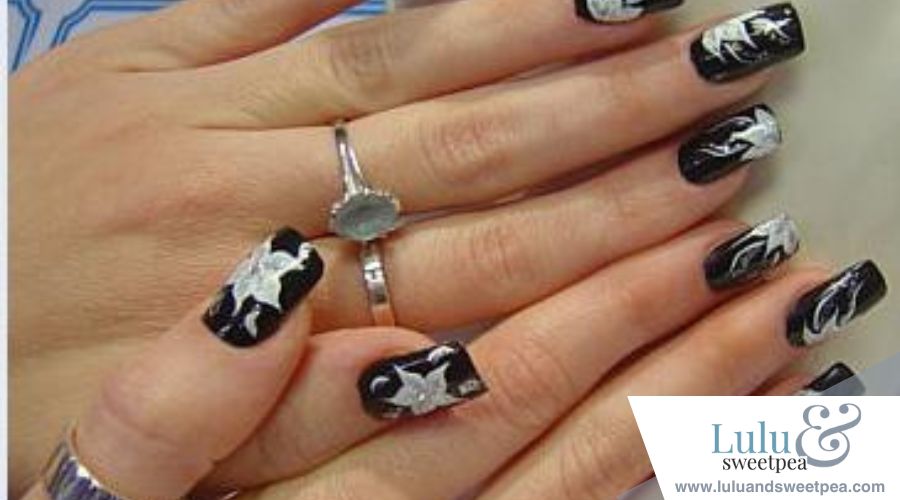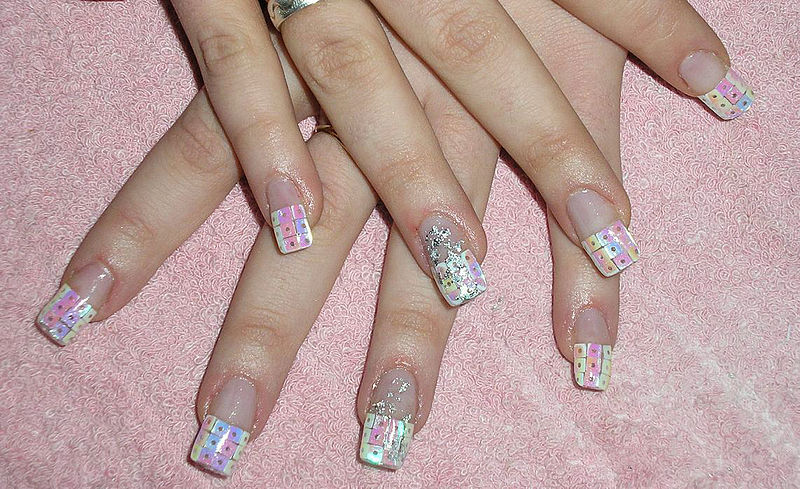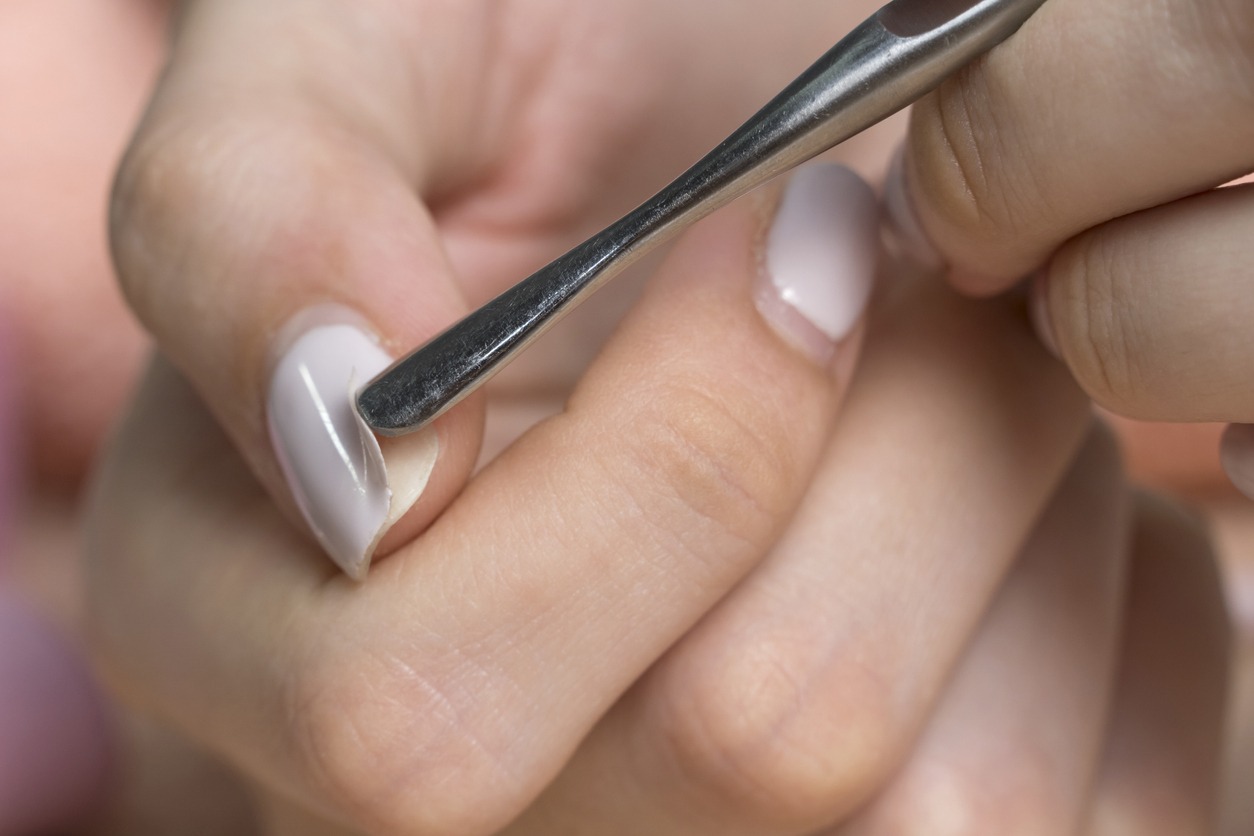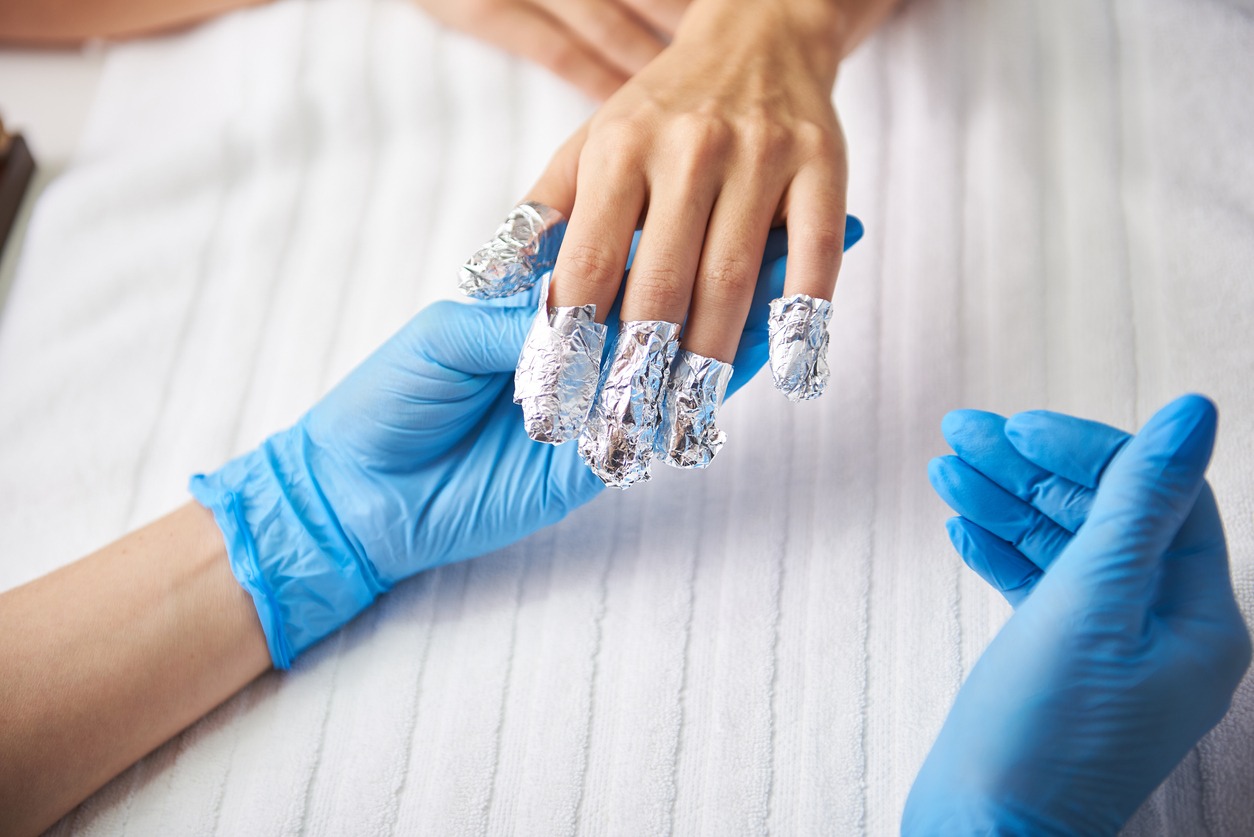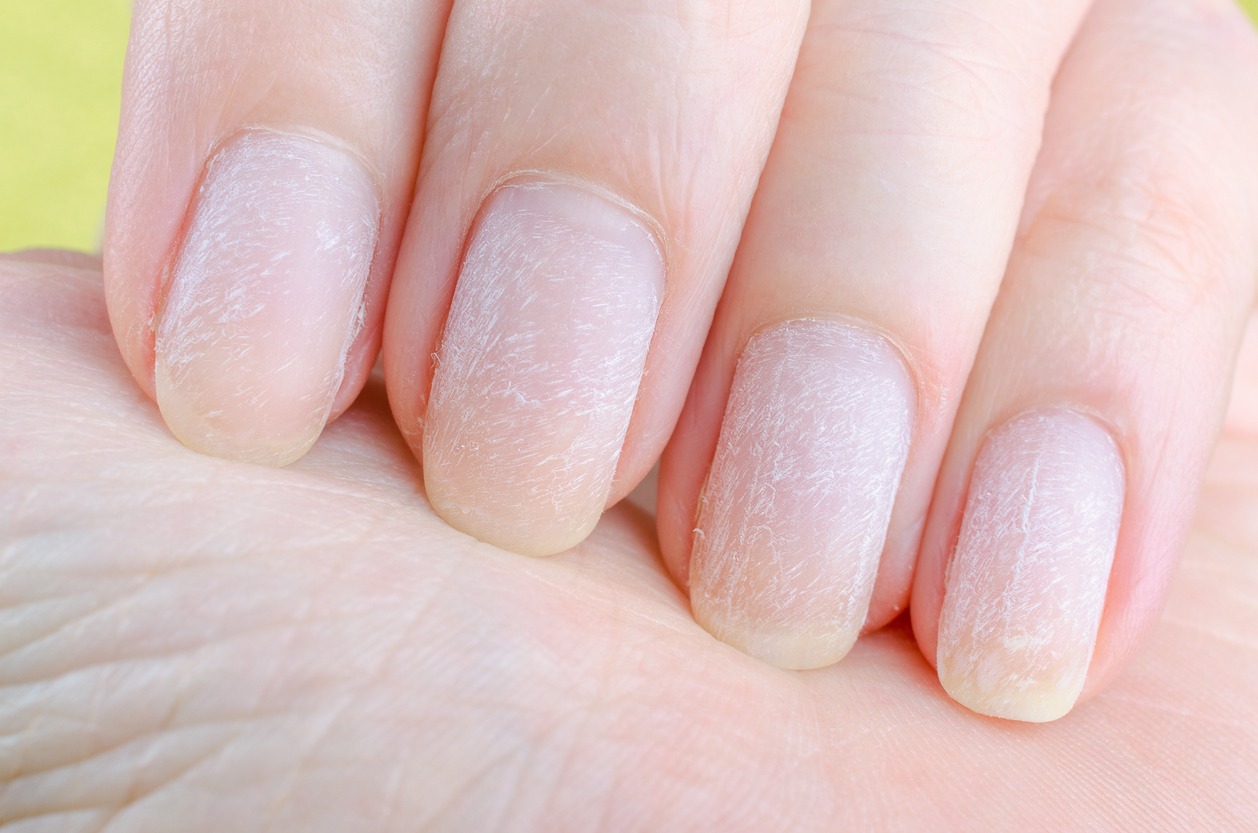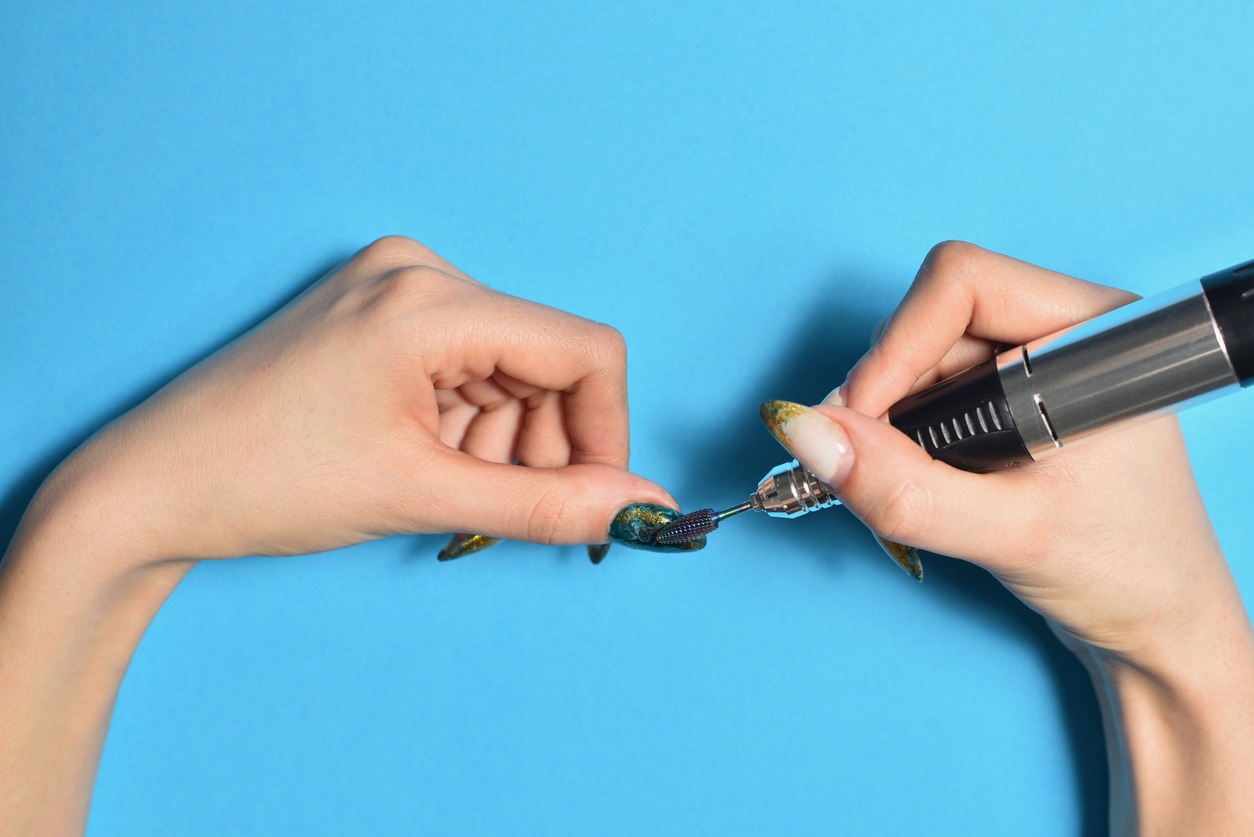Gel nail polish has become a staple in the beauty industry for its durability and shine, often lasting much longer than traditional nail polish. However, the removal process of gel polish is not as straightforward and can be more complex than that of regular polish. It involves a specific technique that ensures the natural nail underneath remains healthy and undamaged. When the time comes to take off the gel polish, many individuals opt to visit a nail salon to get the job done professionally.
In a salon setting, technicians utilize a precise and careful approach to remove gel polish. They begin by gently buffing the nail’s surface to break the seal of the topcoat, which is crucial for the subsequent steps. Then, they typically employ a soak-off method where nails are wrapped in foil with an acetone-soaked pad placed on the nail plate. This step ensures that the gel polish softens without drying out the skin around the nails.
The timing of the soak is monitored by the nail technician to make sure the polish is adequately softened for removal. After the appropriate soak time, typically around 10-15 minutes, the technician uses specific tools like a cuticle pusher or scraper to gently push or scrape the polish off. Precision and care are taken during this process to avoid any damage to the natural nail. Salons often conclude the removal process with nourishment to the nails and cuticles, recognizing that acetone and the removal process can be harsh and potentially drying.
Understanding Gel Nail Polish
Gel nail polish has revolutionized manicures with its long-lasting and chip-resistant qualities. Understanding its composition and how it differs from regular polish is essential for recognizing why gel manicures have become a popular choice.
Composition of Gel Polish
Gel polish is composed of a unique blend of polymers and monomers that form a hard, glossy layer when cured under ultraviolet (UV) or LED light. This curing process creates a durable bond to the nail, allowing the gel polish to resist chipping and maintain its shine for up to two weeks or more.
- Polymers: Give strength and flexibility.
- Monomers: React and bind under UV light.
Difference Between Gel and Regular Polish
The primary distinction between gel polish and regular nail polish lies in both the application process and the longevity of the manicure.
- Curing Process:
- Gel Polish: Requires UV/LED light for curing.
- Regular Polish: Air dries without the need for UV light.
- Wear Time:
- Gel Polish: Lasts up to 2 weeks without chipping.
- Regular Polish: May chip within a few days.
- Finish and Durability:
- Gel Polish: Offers a more robust, scratch-resistant finish.
- Regular Polish: Less durable and not as glossy over time.
Pre-Removal Nail Care
Before salons commence the removal of gel nail polish, it is crucial to prioritize the health of the natural nails. Pre-removal nail care sets the stage for a safe and effective gel polish removal process, ensuring that the nails remain strong and undamaged.
Nail Preparation
The preparation of nails is a meticulous process where nail technicians employ a gentle approach to maintain the integrity of natural nails. It often involves:
- Cleaning: Nails are thoroughly cleaned to remove any residual oils or lotions.
- Buffing: Using a soft nail file, the nail technician lightly buffs the nail’s surface to break the seal of the gel topcoat. This is done carefully to avoid thinning the nail plate.
Cuticle and Nail Health
Salons pay close attention to cuticle and nail health when preparing nails for the gel removal process. Key practices include:
- Hydration: Applying cuticle oil to hydrate and protect the nail and surrounding skin, which may prevent damage from drying agents like acetone.
- Expert Evaluation: A knowledgeable nail technician or, if concerned about nail health, a board-certified dermatologist from the American Academy of Dermatology, may be consulted for personalized nail care recommendations.
Gel Nail Polish Removal Process
The removal of gel nail polish in salons typically involves using acetone-based solutions and specific techniques to ensure nail health is maintained while effectively lifting the polish. The process is designed to minimize nail damage and can vary slightly depending on the salon’s method or the type of gel polish used.
Soak-Off Method
In the soak-off method, salons generally use 100-percent pure acetone to effectively dissolve the gel polish. The process begins with the buffing of the nail’s surface to break the seal of the gel polish. Clients’ fingers are then immersed in a bowl of warm acetone, or acetone-soaked cotton balls are placed directly onto the nail surface. This soaking step usually lasts around 10 to 15 minutes, after which the gel polish softens.
Foil Wrap Technique
The foil wrap technique is a popular method to confine the acetone to the nail area for efficient polish removal. After lightly buffing the nail surface, technicians apply acetone-soaked cotton balls to the nails and wrap them with pieces of aluminum foil. This technique ensures the acetone remains in contact with the gel polish and prevents it from evaporating. A heating pad may be used to expedite the process. Once the polish is loosened, usually after 10 minutes, it can be gently pushed off with a cuticle pusher or nail buffer.
Alternative Removal Methods
When avoiding acetone, salons may opt for the oil method. This technique requires more time and often involves the application of oil to the nails and the use of alternative solvents that are less aggressive than acetone. Additionally, special peel-off base coats that can be applied beneath the gel polish make future removals easier without the need for soaking. However, the effectiveness of acetone-free methods can vary and may not be suitable for all types of gel polish.
Aftercare and Recovery
After the removal of gel nail polish, the focus turns to aiding the natural nails in their recovery and ensuring their health. Proper hydration and moisturization and implementing nail strengthening strategies are pivotal to help the nails regain their natural vigor.
Hydration and Moisturization
Hydration is a cornerstone of post-gel nail polish recovery. Clients should apply hand cream generously to replenish moisture to the skin and nails which may have become dehydrated during the polish removal process. Cuticle oil is also essential; it should be applied daily to nourish the nail beds and cuticles, encouraging healthier regrowth. Here’s a brief guideline for maintaining hydration:
- Daily Hand Cream Application
- Use a quality hand cream at least twice a day.
- Ensure the cream is worked into the nails and cuticles.
- Regular Cuticle Oil Use
- Apply cuticle oil to each nail and massage gently to promote absorption.
- Best used before bed to allow overnight nourishment.
Nail Strengthening Strategies
To aid in the recovery of one’s natural nails, they can incorporate several strategies that increase strength and resilience. Using a nail strengthener can fortify the nails, while avoiding harsh chemicals and tools ensures they are not subjected to further stress. Individuals should consider a break from polish to let the nails breathe. Brief strategies include:
- Applying Nail Strengthener
- Select a nourishing strengthener formulated for post-polish recovery.
- Follow the specific product instructions for application frequency.
- Nail Rest Periods
- Whenever feasible, leave nails bare to encourage natural strength.
- Keep nails neatly trimmed to avoid snags and breaks during this recovery phase.
Professional Removal at Salons
When seeking a thorough and safe way to remove gel nail polish, many customers turn to the expertise of nail salons, where trained manicurists employ specialized techniques.
Benefits of Professional Service
Professional removal at salons guarantees that gel nails are handled with care, reducing the risk of damage to the natural nail. Manicurists are equipped with the right tools and possess the know-how to effectively remove gel polish while preserving the health of the nail. They offer a beneficial experience by:
- Ensuring the natural nails remain undamaged: Professional techniques aim to protect and maintain the integrity of the natural nail, avoiding excessive filing or scraping.
- Saving time: The proficiency of manicurists can make the process quicker than at-home methods.
- Providing a pampering experience: Salons often combine the removal process with other nail care treatments for a relaxing visit.
Techniques Used by Manicurists
The techniques manicurists use when removing gel nail polish involve a multi-step process, typically starting with the nail drill or a coarse-grit file to break the seal of the gel polish. Here’s an outline of the customary strategy:
- Buffing the nail surface: This is done gently to remove the glossy finish and allow the acetone to penetrate the gel layers.
- Application of acetone: They either soak the nails in a bowl of acetone or use acetone-soaked cotton balls placed directly on the nails.
Method Description Soak Nails are submerged in a bowl of acetone for a specific amount of time. Cotton ball and foil Cotton balls, drenched in acetone, are secured onto the nails with foil. - Waiting period: Nails are left to soak for around 10-15 minutes; time may vary based on the gel’s thickness.
- Gentle removal: Once the gel has sufficiently softened, manicurists use a cuticle pusher or scraper tool to carefully remove the loosened gel polish.
Through professional expertise, manicurists ensure the gel polish removal is done efficiently, leaving nails clean and ready for the next service.
Health and Safety Considerations
When salons remove gel nail polish, the priority is to prevent damage to the natural nail plate and surrounding skin while also considering the potential risks associated with UV exposure. It is crucial to follow dermatologist-approved methods to avoid long-term damage to the nails and skin.
Skin and Nail Damage Prevention
To protect the integrity of the natural nail plate and prevent skin irritation, salons carefully select products and removal techniques. Dermatologists recommend:
- Minimizing contact with pure acetone by using protective barriers such as petroleum jelly on the surrounding skin.
- Gently filing the gel surface to break the seal before soaking, avoiding excessive pressure that can lead to cracking or lines on the natural nails.
Risks of UV Exposure
The use of UV or LED lamps to cure gel polish has been a concern with a potential risk for skin cancer. Salons should ensure that:
- The time under the lamp is as brief as possible and follows manufacturer guidelines.
- Clients apply sunscreen on their hands, specifically on the parts exposed to UV light, should they be frequent users of gel polish services.
Safety Measures for Home Removal
While removing gel polish at home, one must take safety measures to mirror the professional care of salons:
- Utilization of 100% pure acetone and protective materials such as foil or plastic wrap should be done with care to avoid prolonged skin contact.
- One should not scrape the nail aggressively; instead, allow the acetone to do the work and gently push the polish off.
By adhering to these safety protocols, risks associated with gel polish removal can be significantly reduced.
Tips and Tricks for Effective Removal
Professional salons employ meticulous methods to ensure the safe and effective removal of gel nail polish. This section breaks down the essential steps and techniques used by experts.
Enhancing Removal Efficiency
To optimize the removal process, salons often begin with a coarse nail file to gently break the seal of the gel polish’s topcoat. This allows the acetone to penetrate more effectively. They then apply acetone-soaked cotton pads to the nail and wrap each finger with foil to create a secure and concentrated environment for the removal agent.
- File the topcoat: Lightly file the surface of the gel polish to remove the shine.
- Acetone application: Saturate cotton pads with acetone and place them directly on the gel polish.
- Foil wrapping: Wrap each fingertip with foil to secure the cotton pads and increase the acetone’s efficiency.
Expert Advice and Techniques
Salon professionals recommend using a generous amount of acetone, as it is the most effective solvent for breaking down gel polish. Patience is crucial; they advise keeping the nails wrapped for at least 10 minutes. A cuticle stick may be employed to gently nudge any lingering polish after the soaking process, taking care not to damage the natural nail.
- Acetone: Use a high-quality, salon-grade acetone.
Removal of Stubborn Gel Polish
For particularly unyielding gel polish, additional steps might include re-soaking the cotton pads with acetone or using a buff away technique to carefully remove any remnants. Salons avoid harsh scraping that can damage the nail bed. Instead, the focus is on repeating the soak and gentle nudging until the gel polish releases.
- Re-soak: If necessary, reapply acetone-soaked cotton for a few more minutes.
- Buff away: Use a buffer to carefully lift away the last bits of polish.
- Cuticle stick: Employ the stick with care to remove any remaining polish.
